Most endurance athletes understand that sweating is essential for regulating body temperature and maintaining homeostasis during exercise. However, as athletes age, the rate of sweating and the electrolytes lost through sweat can change. Recognizing these changes is key to staying properly hydrated, optimizing performance, and preventing heat-related illnesses. This article leverages Nix Solo data to examine how sweat composition, sweat rate, and electrolyte losses differ across various age groups.
Sweat Composition by Age
The Nix dataset includes a diverse group of athletes from around the world, participating in a wide range of activities, with a focus on running and cycling. For this analysis, we’ve specifically concentrated on users aged 20 and older. The Nix Solo app measures sweat composition which indicates the concentration of electrolytes in sweat and then provides each user with an output including the amount of electrolytes(mg) lost per ounce of sweat. This composition can vary significantly between individuals, with some athletes losing less than 20 mg/oz, while others exceed 100 mg/oz. Nix recommends using this metric to help determine the ideal electrolyte drink, tailored to your unique biology and training environment.
When looking at sweat composition averaged out across all users, regardless of age, there is a tight range - between 45-51 mg/oz and the highest peaking with athletes aged ~60 years old.

Like most averages, this figure masks important nuances in the data. When we break it down by age group, we discover that 70-80% of users within each bracket have sweat compositions ranging from 30-60 mg/oz. This range encompasses popular electrolyte drinks like Nuun Sport, Hydralyte Tablets, and Liquid IV.
For example, 32.5% of Nix users in their 30s fall within the 45-60 mg/oz range, while a larger proportion—about 44%—of users in their 60s have sweat compositions in the same range.
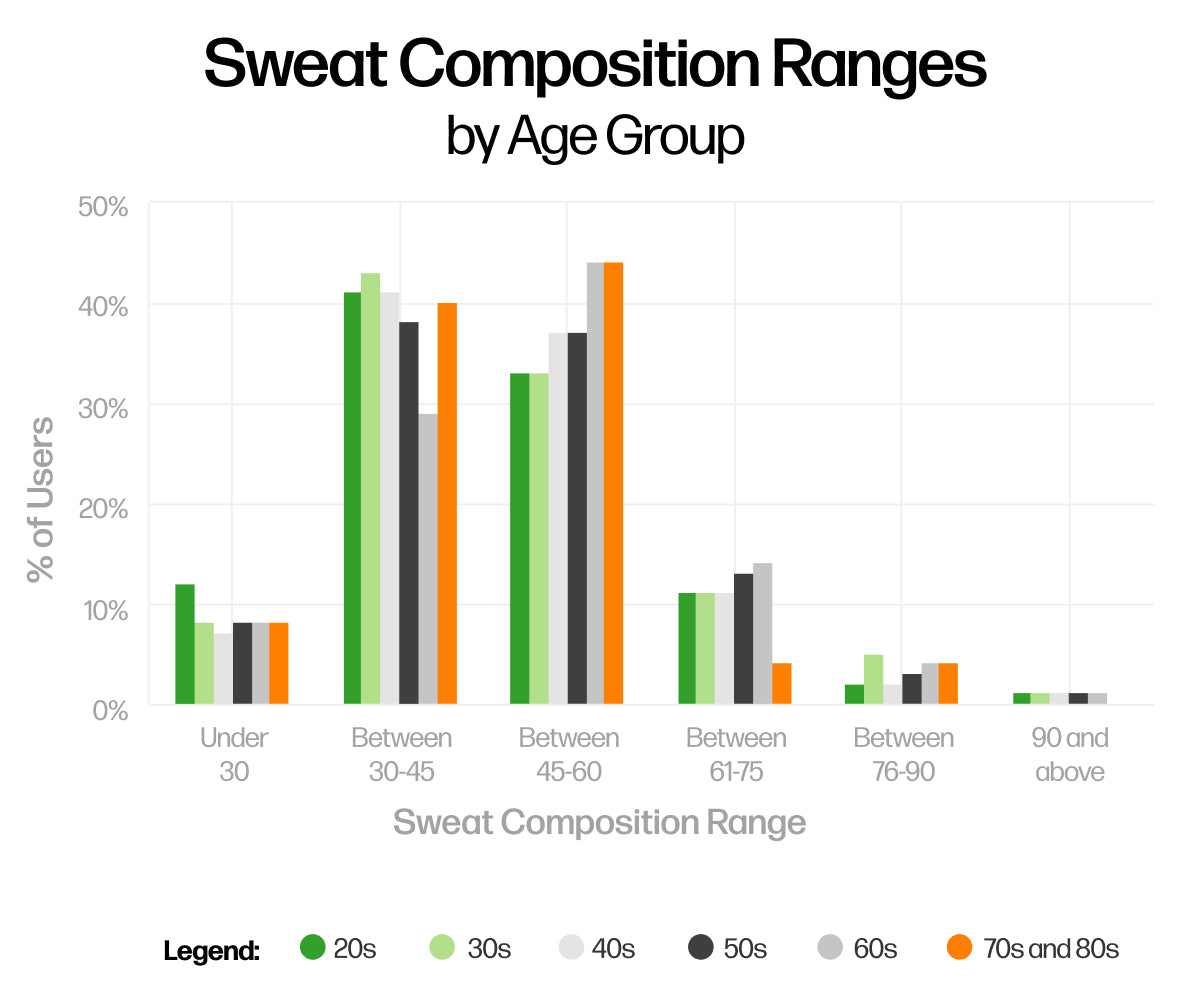
Sweat Composition by Activity
The differences in sweat composition across age groups becomes even more pronounced when we look at the workout type. On average, runners experience sweat compositions that are 17% higher than cyclists (50.3 mg/oz for running vs. 43.0 mg/oz for cycling). Furthermore, sweat composition tends to increase with age, indicating that older athletes lose more electrolytes in their sweat.
Note: Users who have logged both cycling and running activities with Nix will contribute two data points to this analysis.
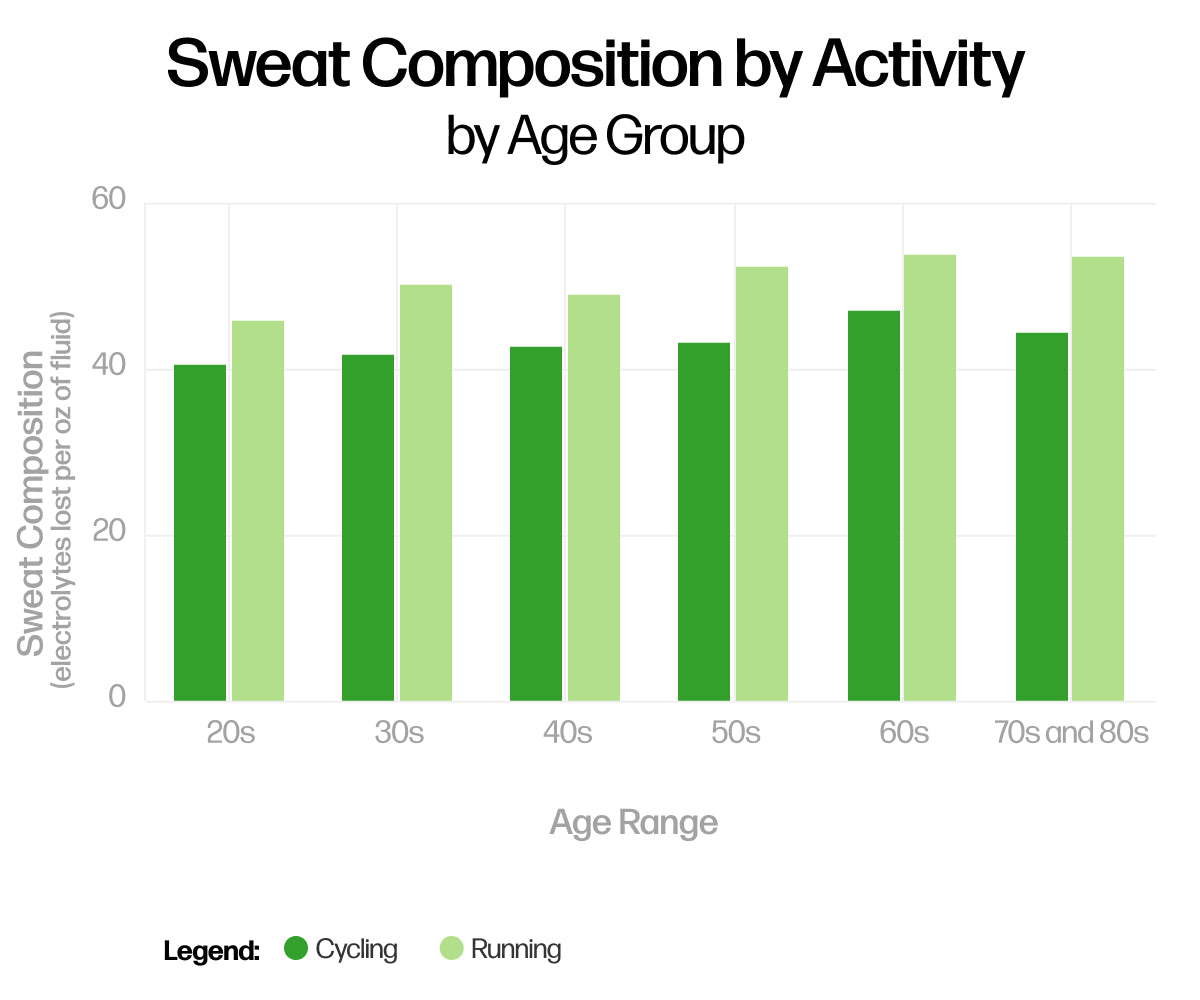
Sweat Composition and Fluid Losses Are Not Constant
Understanding which electrolyte beverage is best suited to your personal fluid and electrolyte needs is crucial for effective replenishment. Fluid requirements and electrolyte losses do not remain constant as athletes age. For example, a runner in their 30s needs about 31 oz/hr, while a 65 year old runner requires roughly 10% less (around 27.5 oz/hr).
Similarly, electrolyte needs also vary with age, typically increasing from the 20s to the 60s. According to the data, a 30-year-old cyclist requires an average of 1,220 mg of electrolytes per hour, while a 60-year-old cyclist needs 180 mg more—equivalent to one Maurten 160.
This difference can be attributed to various factors, including fitness levels, workout environment (indoor vs. outdoor), environmental conditions (temperature, altitude, humidity, dew point, solar load, and wind speed), and workout intensity. As a reminder, within the Nix Solo app, you can add notes, tags, and your RPE (rate of perceived exertion) to any of your workouts.


Understanding Your Personal Hydration Needs
These age-based statistics provide a useful starting point for understanding sweat rate, electrolyte loss rate, and sweat composition. However, it’s essential to dive into your own personal data to identify variations in these key metrics across different workouts. Gaining insight into how your body responds and adapts to various workouts and environmental conditions is crucial for developing an effective hydration strategy. Below are six examples from users with diverse workout routines.
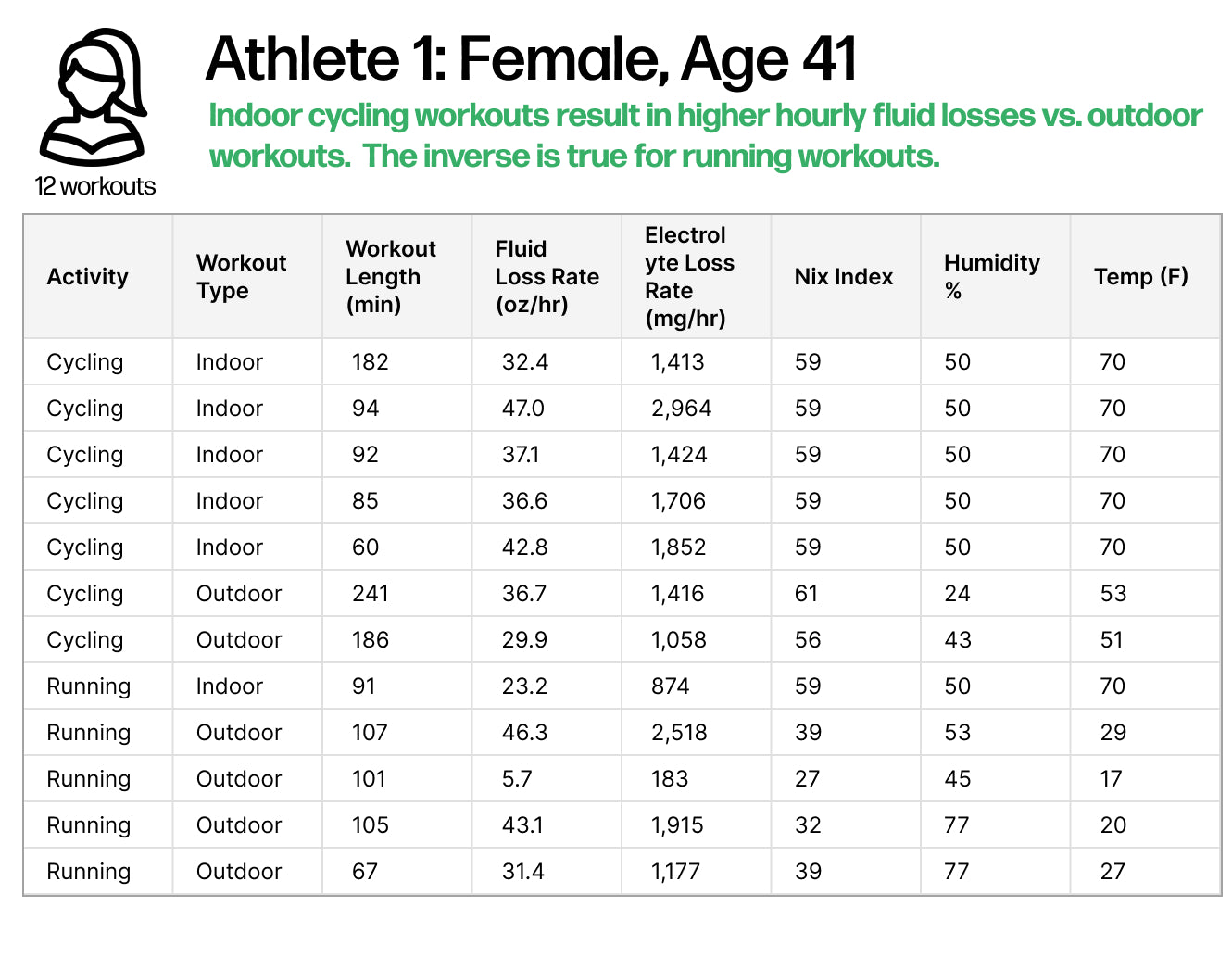
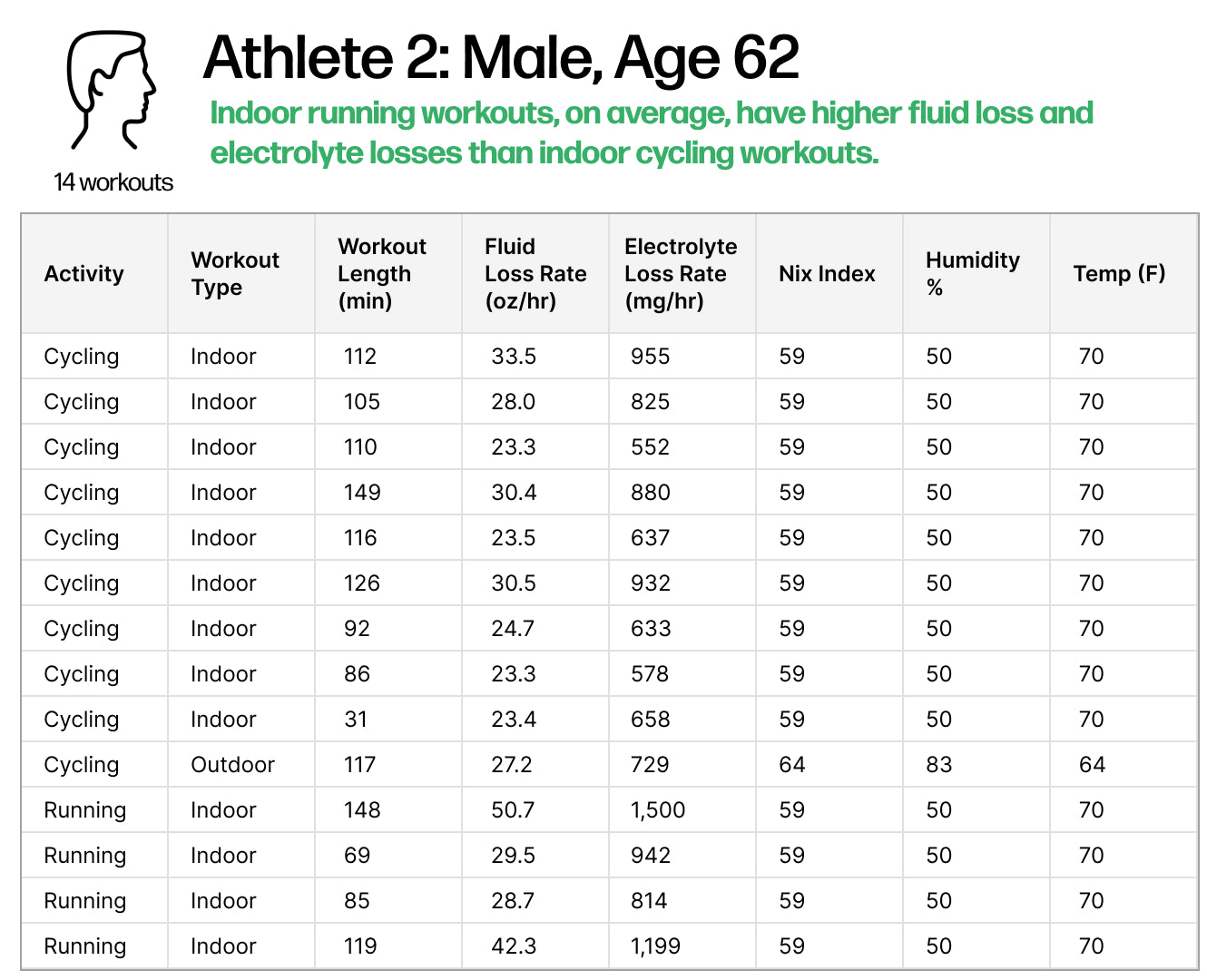
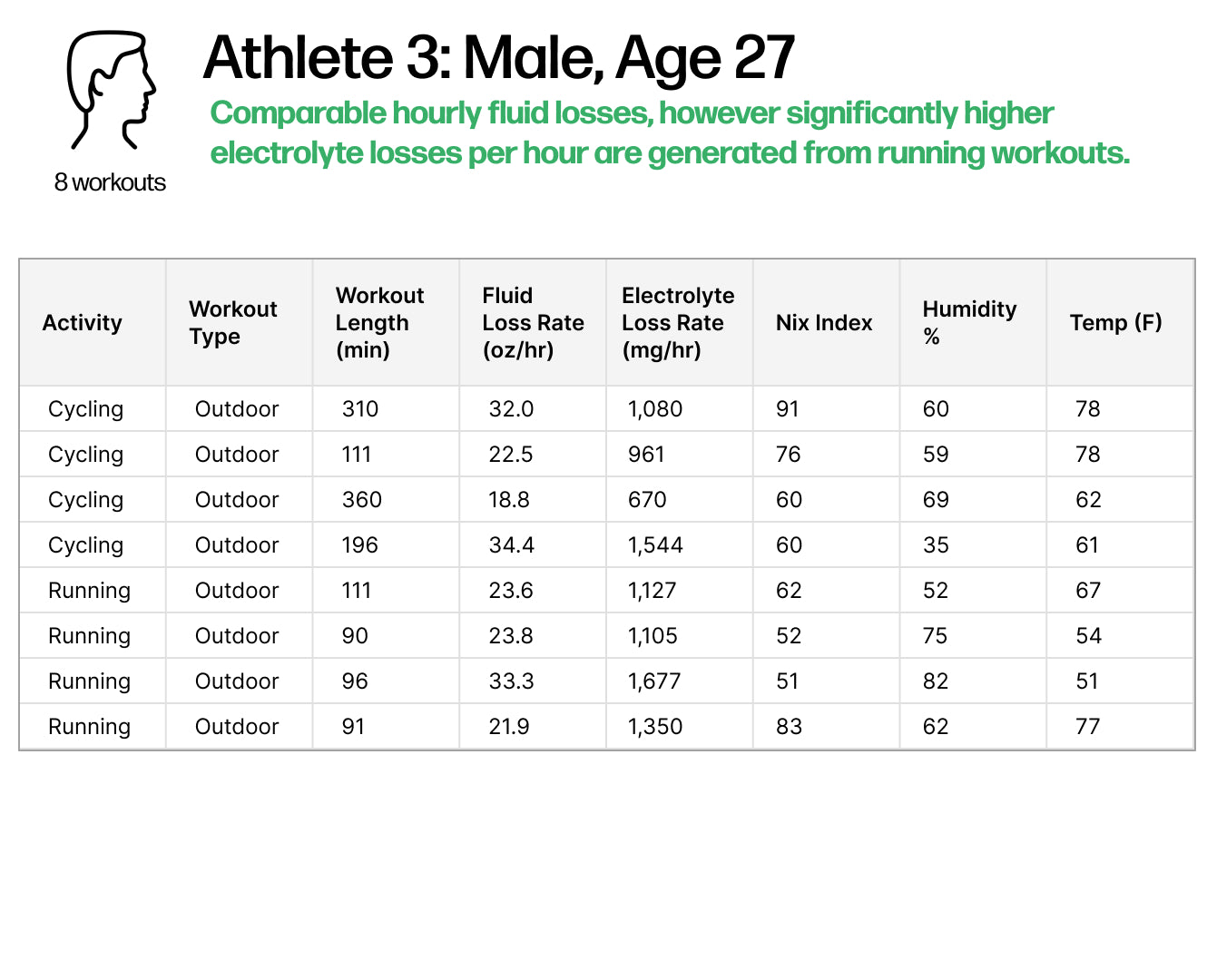
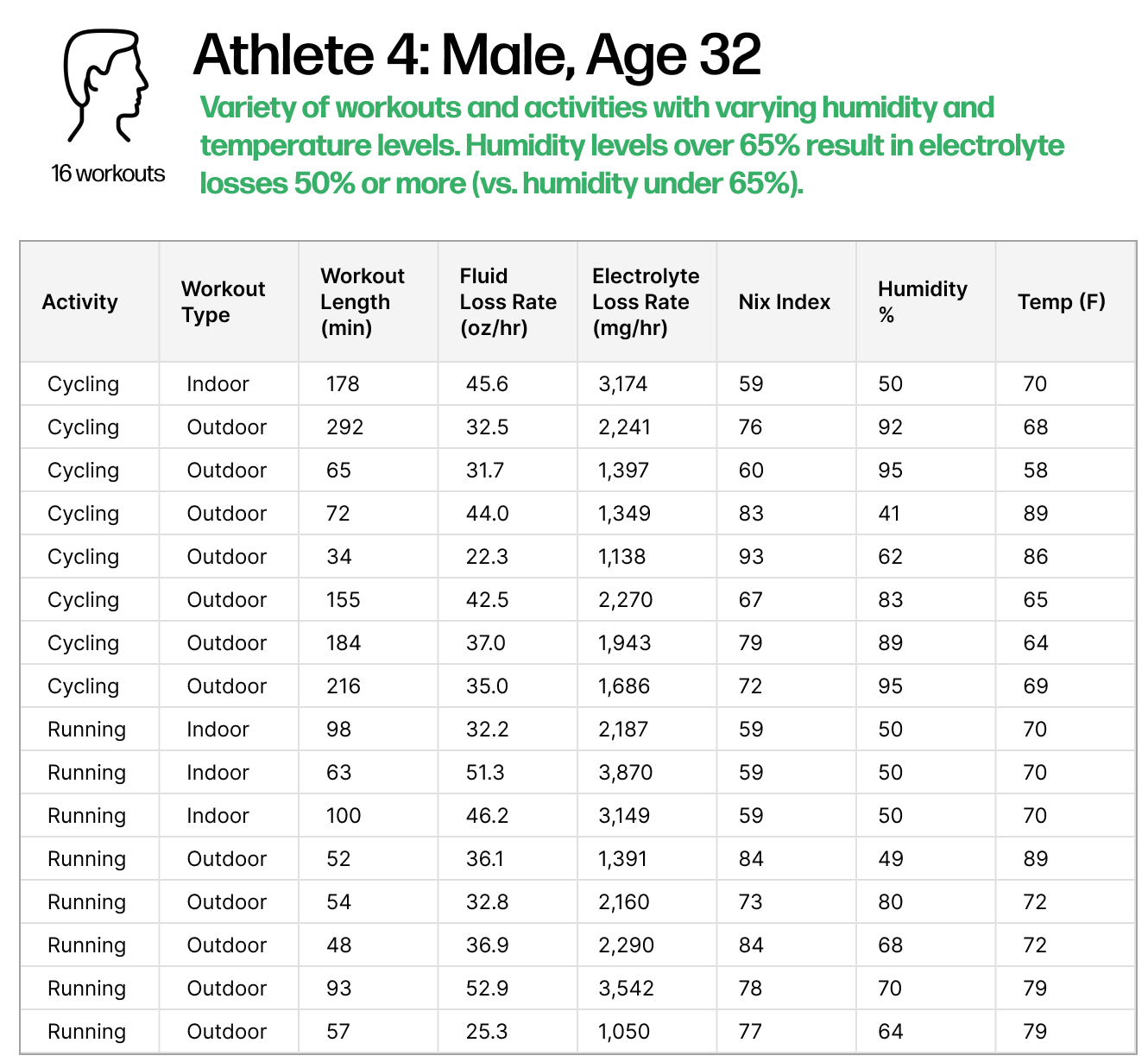
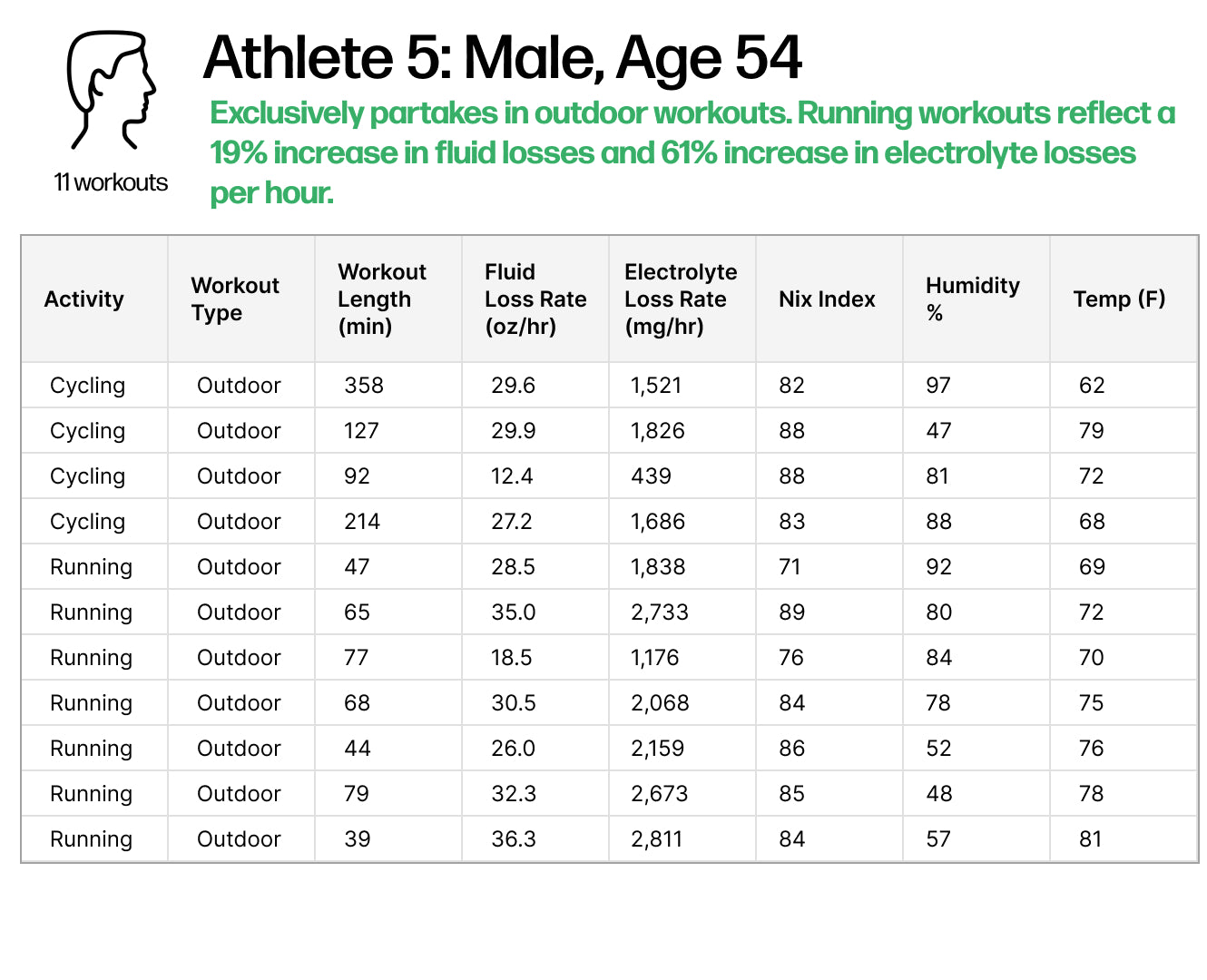
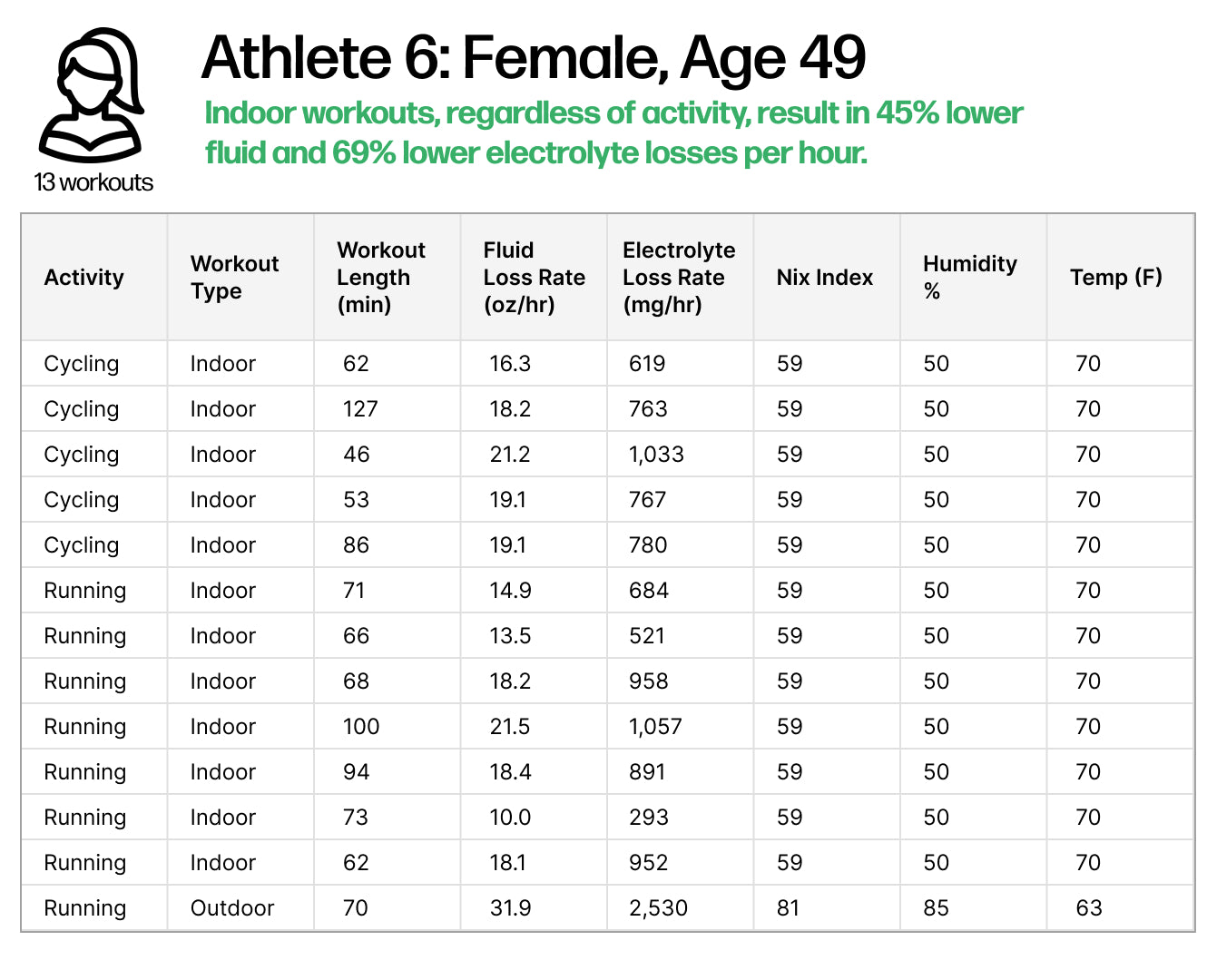
Causes of Variation in Sweat Rate with Age
As we age, our body's ability to sweat changes due to several physiological factors:
- Reduced Sweat Gland Function: Sweat glands become less active, leading to lower sweat production in older adults.
- Decreased Skin Blood Flow: Blood circulation to the skin declines with age, reducing the body’s ability to dissipate heat effectively.
- Hormonal Changes: Hormones like estrogen and testosterone influence sweat production, and their fluctuations over time can affect how much we sweat.
Implications for Health and Performance
Age-related differences in sweat rate and electrolyte loss have significant implications for hydration and health:
- Hydration Needs Change Over Time: Athletes need to continue to replenish their fluids after activities. Older adults experience decreased thirst sensations so conscious replenishment is necessary
- Type and Intensity of Activity Impacts Personal Hydration Metrics: The activity engaged in, and intensity of training, can have an impact on fluid and electrolyte losses
- Periodically Evaluate Electrolyte Supplements: The electrolyte brand(s) utilized in your 30s may no longer be the one best suited for you in your 60s. Monitor your sweat composition and adjust your beverage selection accordingly.
Understanding how sweat rate and electrolyte losses change with age can help athletes take proactive steps to stay hydrated, avoid heat stress, and optimize performance. Whether you're an athlete chasing a new PR or simply trying to maintain good health, adjusting hydration strategies based on age can make a significant difference in well-being and overall resilience to heat.
Additional Reader Notes
Do you have a hydration topic that you want to see us cover? Send us a note to info@nixbiosensors.com and we’ll add it to our list of upcoming article content.
Data for this article was compiled based on gender, workout length and activity type (cycling and running) for workouts from August 2023 through January 31, 2025. This data range was selected to ensure all workouts included the respiratory model which was introduced in July 2023. Age bands were ascribed based on age as of 1/31/25. Users who didn’t adjust the default birthday within Nix Solo were excluded from the analysis. Only workouts of at least 30 minutes in length are included within the dataset.





